The Invisible Enemy of Modern Home Life
Your Wi-Fi router, the single, often forgotten device upon which our digital life depend, is the key to performance. Let’s be honest: in 2025, a slow, unreliable internet connection-which often points straight back to your router is more than just a minor inconvenience; it’s a critical failure of your home’s infrastructure.
Imagine this all-too-common scenario: You’re settling in for a family movie night, ready to stream that new 4K HDR blockbuster. Just as the opening credits roll, the screen buffers. Later, your teenager is trying to finish their online homework while you are simultaneously on a crucial, high-stakes Zoom meeting, and suddenly, the connection drops out completely. Sound familiar?
The frustrating truth is that you can pay for the fastest fiber connection on the planet, but if the device distributing that signal—your router—is old, weak, or poorly placed, you’re losing a huge percentage of the speed you paid for. It’s like having a supercar stuck in rush hour traffic.
Why the Router Upgrade Can’t Wait
Your old router (especially if it’s more than three years old) was not built to handle the sheer volume of smart devices present in the modern home. Consider the count: phones, tablets, smart TVs, gaming consoles, smart speakers, security cameras, smart thermostats, and perhaps a dozen other gadgets—all competing for bandwidth.
Upgrading to a top-tier router is the single most cost-effective way to solve lag, conquer dead zones, and future-proof your connectivity. It is an essential investment in your family’s productivity, entertainment, and peace of mind.
Here at MindGearMen, we understand the frustration of spotty Wi-Fi. That’s why we meticulously researched the Amazon marketplace, analyzing the latest Wi-Fi standards (Wi-Fi 6, 6E, and 7), user ratings, and expert performance data. We’ve compiled the definitive list of the top 5 WiFi routers on Amazon for home use right now, ensuring there’s a perfect fit for every type of household and budget.
Get ready to transform your internet experience from infuriating to instantaneous.
The Ultimate WiFi Router Buying Guide: From Jargon to Clarity
Before diving into the top models, let’s quickly equip you with the knowledge to understand what separates a good router from a truly great one.
1. Understanding Wi-Fi Standards: The Generational Leap
The alphabet soup of Wi-Fi standards determines the core performance capabilities of your router:
- Wi-Fi 5 (802.11ac): The old standard. Dual-band, but struggles with device density. If you still have this, it’s time to upgrade.
- Wi-Fi 6 (802.11ax/AX): The modern minimum. Designed with technologies like OFDMA and MU-MIMO, it excels at managing dozens of devices simultaneously, providing much better performance in busy households. It’s efficient and fast.
- Wi-Fi 6E (802.11axe/AXE): This is Wi-Fi 6 with a massive expansion. It opens the 6 GHz frequency band, which is essentially a brand-new lane on the data superhighway. This band is less congested and offers incredibly low latency and high speeds, perfect for close-range activities like VR or competitive gaming.
- Wi-Fi 7 (802.11be/BE): The infrastructure for tomorrow. With features like Multi-Link Operation (MLO), Wi-Fi 7 is exponentially faster and more reliable, though only a few devices currently support it. It’s the ultimate future-proofing move.
2. Mesh vs. Traditional: Coverage and Range
The layout of your home dictates your choice here:
- Traditional (Single Router): Best for small spaces, like apartments or single-story homes under 1,800 sq. ft. All the power comes from one central location.
- Mesh System: A set of identical units (a main router and satellite “nodes”) that communicate wirelessly to create one cohesive network. They’re essential for multi-story homes, long ranch-style homes, or any space over 2,000 sq. ft. where a single signal can’t reach. Look for Tri-Band Mesh systems, as the third band acts as a dedicated backhaul path between units, ensuring the nodes don’t slow down your actual devices.
3. Security and Control: Protecting Your Family
A great home router is also your first line of defense against online threats.
- WPA3 Security: This is the latest encryption protocol. Always ensure your new router supports WPA3 to maximize your network’s security against intruders.
- Parental Controls: Essential for families. Modern routers offer app-based controls that allow you to set internet schedules, block inappropriate content, and pause the internet for specific devices (a great dinner-time tool!).
- QoS (Quality of Service): This feature lets you prioritize certain types of traffic (e.g., gaming data over file download data) or specific devices (e.g., your work PC gets priority over the living room TV). Crucial for power users and anyone working from home.
1. ASUS ZenWiFi AX (XT8): The Premium Whole-Home Mesh Powerhouse
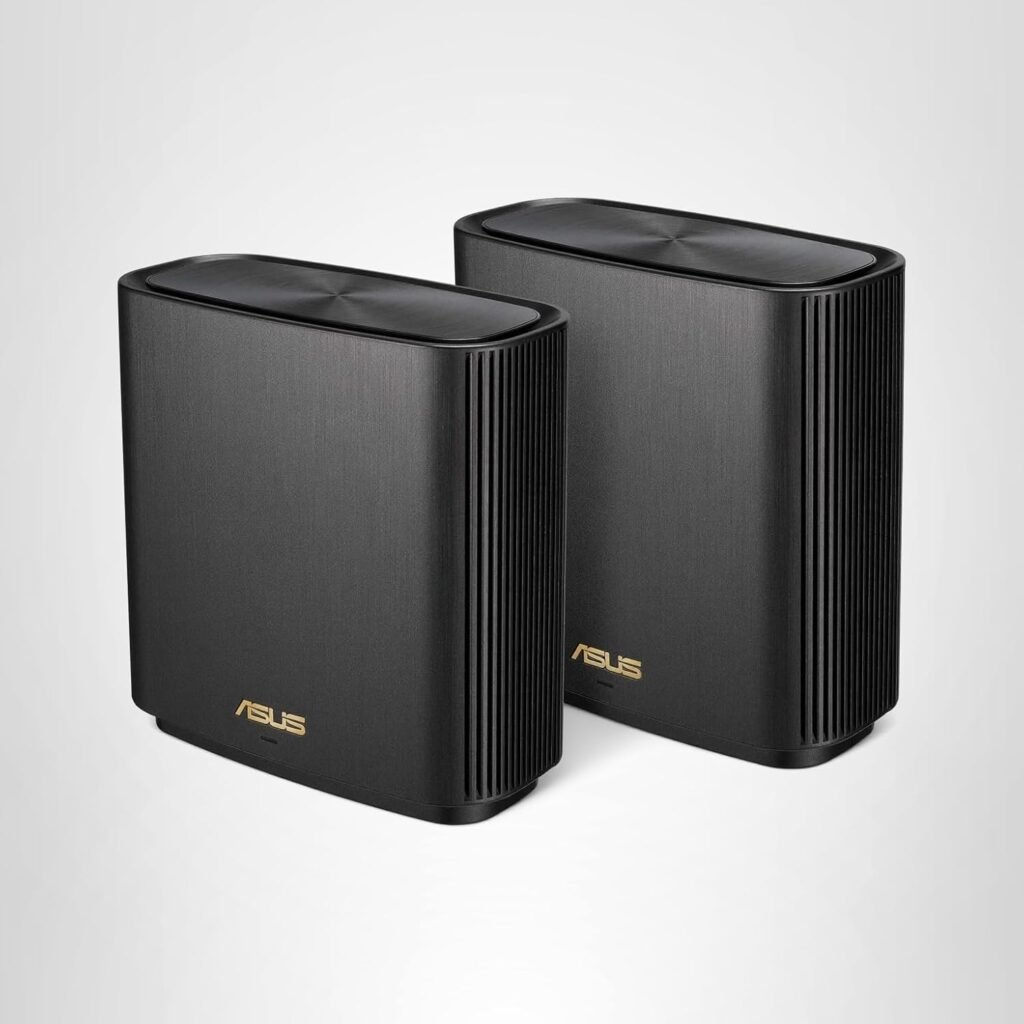
Overview: Best for Large, Demanding Households
The ASUS ZenWiFi AX (XT8) isn’t just a router; it’s a high-performance networking system designed to deliver consistent, lightning-fast Wi-Fi 6 speeds (AX6600) across expansive areas. It beautifully blends the technical prowess ASUS is known for with the user-friendly nature of a mesh system.
The Power of Tri-Band Backhaul
What elevates the XT8 above standard mesh systems is its powerful Tri-Band architecture. It intelligently reserves one of its high-speed 5 GHz bands specifically for communication between the two nodes. This “dedicated backhaul” eliminates the bottleneck common in Dual-Band mesh systems, ensuring that even the farthest satellite node delivers speeds nearly as fast as the main router. This results in truly flawless coverage up to 5,500 sq. ft. (with the two-pack).
Essential ASUS Software Perks
ASUS consistently bundles value into their hardware, and the XT8 is no exception. It includes AiProtection Pro, which provides commercial-grade security powered by Trend Micro. This feature includes vulnerability detection, malicious site blocking, and infection prevention—all without subscription fees for the life of the product. Furthermore, the robust ASUS AiMesh technology allows you to easily incorporate other compatible ASUS routers, giving you unparalleled flexibility in expanding your network over time.
| Key Feature Summary | Why It Matters for Home Use |
| Dedicated Tri-Band Backhaul | Guarantees top speed at every node, not just the main router. |
| 2.5G WAN Port | Ready for multi-gig fiber internet service plans. |
| AiProtection Pro | Free, lifetime security and network protection software. |
| AiMesh Ready | Future-proof flexibility to expand your network with any ASUS AiMesh router. |
Target User
This system is for the large home, the multi-story dweller, or the user who demands premium speed and built-in security without ongoing subscription costs. If you have an internet plan over 500 Mbps, this router will ensure you actually receive that speed everywhere.
2. TP-Link Archer AX55: The Unbeatable Budget Champion
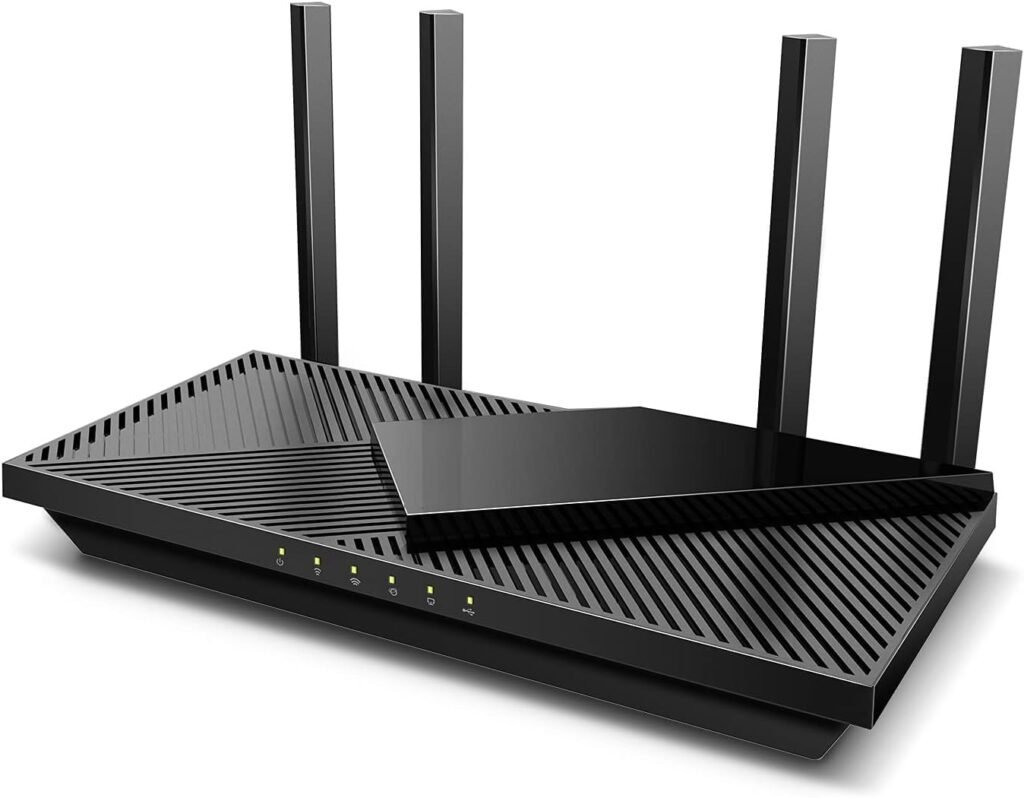
Overview: Best Value Wi-Fi 6 Upgrade
When you’re looking for the biggest performance boost for the lowest investment, the TP-Link Archer AX55 (AX3000) is the immediate Amazon frontrunner. It’s the perfect, affordable entry point into the world of Wi-Fi 6, offering a massive leap in speed and efficiency over any older Wi-Fi 5 router.
Maximizing Bandwidth with 160 MHz
The AX55 doesn’t rely on expensive Tri-Band technology; instead, it uses smart Dual-Band technology and crucially supports 160 MHz channel width. This feature effectively doubles the theoretical data transfer capacity on the 5 GHz band. For modern laptops and smartphones that support 160 MHz, this translates to noticeable bursts of speed—perfect for rapid downloads and smooth 4K streaming.
Simplicity Meets Reliability
TP-Link ensures reliability with a proven hardware platform and the intuitive Tether app. The setup is quick and painless, guided entirely by the app. While its parental controls are more basic than the ASUS, it does offer TP-Link HomeShield Basic, which provides some essential quality of service (QoS) controls to help you prioritize one activity (like a work meeting) over another (like streaming). It’s the ideal blend of speed, stability, and simplicity for the average family.
| Key Feature Summary | Why It Matters for Home Use |
| Wi-Fi 6 (AX3000) | Provides the necessary efficiency for dozens of connected devices. |
| 160 MHz Channel Support | Allows modern devices to achieve up to double the speed on the 5 GHz band. |
| HomeShield Basic | Simple network management and basic QoS controls. |
| WPA3 Security | Ensures the latest, most robust encryption for your home network. |
Target User
This is the router for medium-sized homes (under 2,000 sq. ft.) with standard 300-1000 Mbps internet plans. If you need a significant, reliable upgrade from an ISP-provided unit, but don’t need mesh coverage or extreme gaming features, the AX55 is the smartest value proposition on the market.
3. eero 6+: The Ultimate Simplicity and Seamless Integration
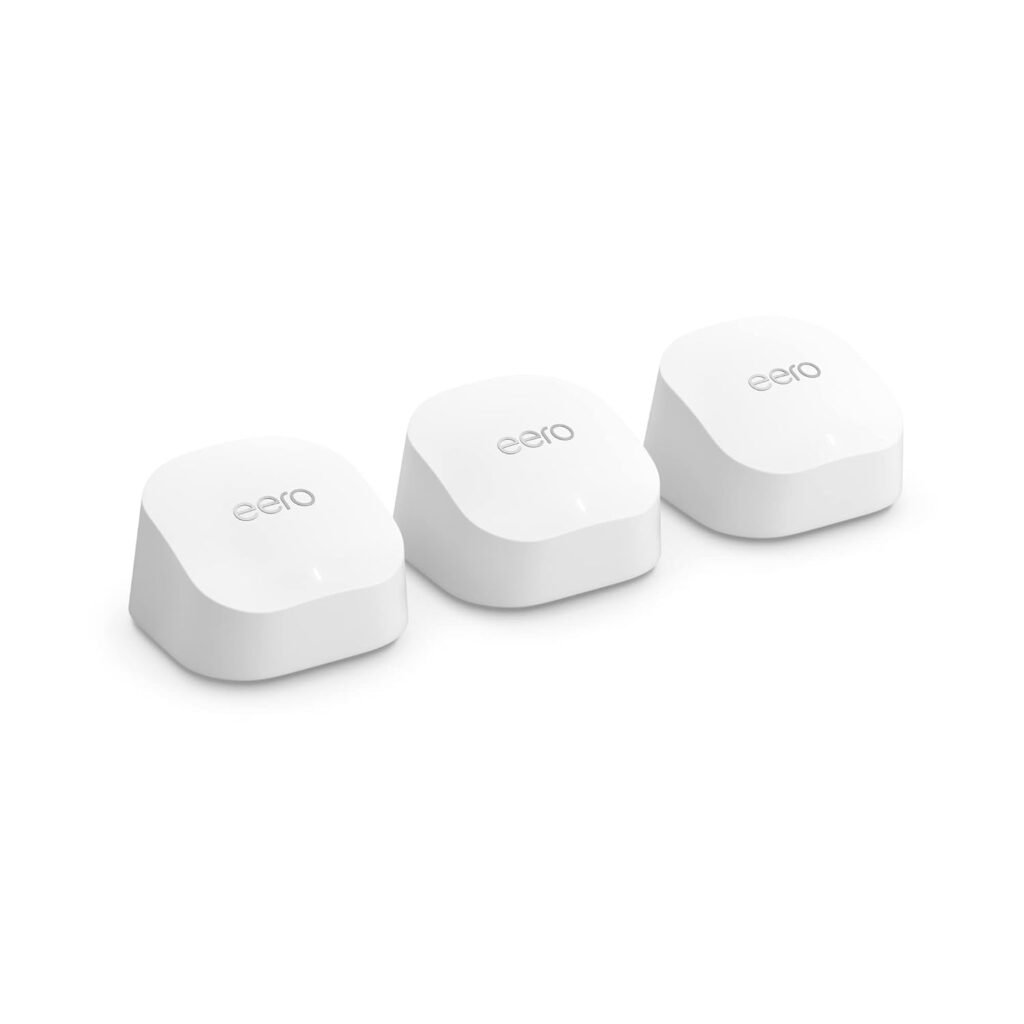
Overview: Best for Smart Home and Ease of Use
Amazon’s eero line has defined the “simple Wi-Fi” market, and the eero 6+ (AX3000) represents the peak of user-friendly performance. This mesh system is designed for the user who doesn’t want to tinker with settings, but simply wants fast, consistent Wi-Fi that covers every corner of the house.
TrueMesh Technology and Smart Home Hub
The eero system utilizes TrueMesh technology, a proprietary system that intelligently routes traffic and automatically adjusts your network to bypass congestion and dead spots. It’s constantly optimizing itself in the background. Furthermore, the eero 6+ features a built-in Zigbee smart home hub, allowing you to connect compatible smart devices (like plugs and sensors) directly to the router without needing a separate hub, tying seamlessly into your Alexa ecosystem.
The Trade-Off for Simplicity
The main trade-off for this simplicity is that many advanced features, such as deeper parental controls, ad blocking, and advanced network security, are locked behind the optional eero Secure subscription service. However, for a user prioritizing a clean look, plug-and-play functionality, and robust smart home integration, this trade-off is well worth it. Its small, discreet nodes blend in beautifully, eliminating the “spider router” look.
| Key Feature Summary | Why It Matters for Home Use |
| TrueMesh Technology | Intelligent, self-optimizing network; eliminates manual troubleshooting. |
| Built-in Zigbee Hub | Connects smart home devices directly, simplifying your setup. |
| Sleek, Compact Design | Easy to place the nodes centrally for best signal without being an eyesore. |
| 160 MHz Channel Support | Delivers fast, modern Wi-Fi 6 speeds (AX3000). |
Target User
Ideal for medium-to-large homes (up to 4,500 sq. ft. with a two-pack) where aesthetics and ease of use are paramount. If you have a growing collection of smart home devices and are already integrated into the Amazon ecosystem, this is your definitive mesh choice.
4. ASUS ROG Rapture GT-AX6000: Extreme Speed for Power Users and Gamers
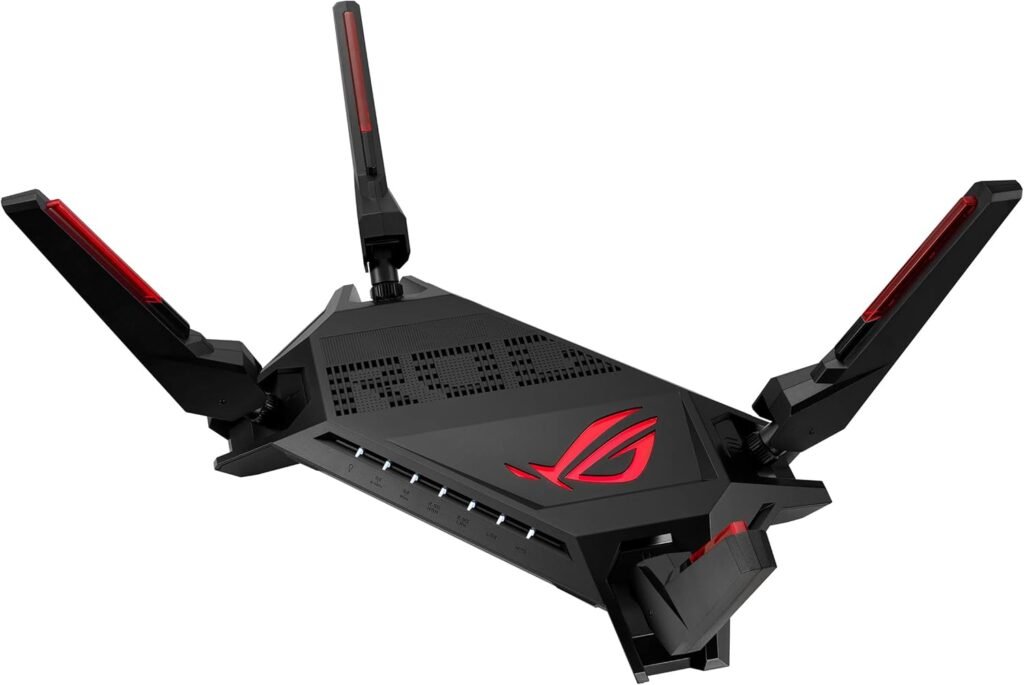
Overview: Best for Wired and Wireless Performance Extremes
The ASUS ROG Rapture GT-AX6000 (AX6000) is built like a tank and performs like a race car. It’s engineered not just to handle network load, but to dominate it. While branded for gaming, its powerful hardware and bandwidth management features make it an absolute powerhouse for any demanding activity.
The Power of Dual 2.5 Gbps Ports
What truly sets the GT-AX6000 apart from most standard routers is its physical connectivity. It includes two dedicated 2.5 Gbps Ethernet ports: one for the WAN (connecting to a multi-gig modem) and one for a LAN device (connecting directly to a high-performance desktop or local server). This allows the most demanding devices to bypass the standard 1 Gbps limit entirely, a crucial advantage for competitive gaming or editing large video files over a network.
Gaming-Centric Prioritization
The hardware is backed by specialized software. Its unique Gaming Port automatically gives the highest priority to any device plugged into it, guaranteeing the lowest latency possible. Furthermore, its advanced QoS and Traffic Analyzer gives you complete, granular control. You can dedicate bandwidth to streaming services, gaming, or general browsing with simple drag-and-drop controls in the robust ASUS web interface. This level of customization is unmatched in the home router space.
| Key Feature Summary | Why It Matters for Home Use |
| Dual 2.5 Gbps Ports | Unlocks extreme speeds for both your ISP connection and your wired PC/server. |
| Dedicated Gaming Port | Guarantees lowest ping and highest priority for competitive gamers. |
| Advanced QoS Tools | Allows granular, manual control over network traffic prioritization. |
| High-Power CPU | Maintains peak performance under the most extreme device load. |
Target User
This router is for the discerning user who understands and needs the absolute best in speed, low latency, and customization. It’s perfect for serious online gamers, IT professionals, developers, or anyone with high-speed local network requirements (like a dedicated media server).
5. TP-Link Archer BE9700: The Future-Proof Wi-Fi 7 Investment
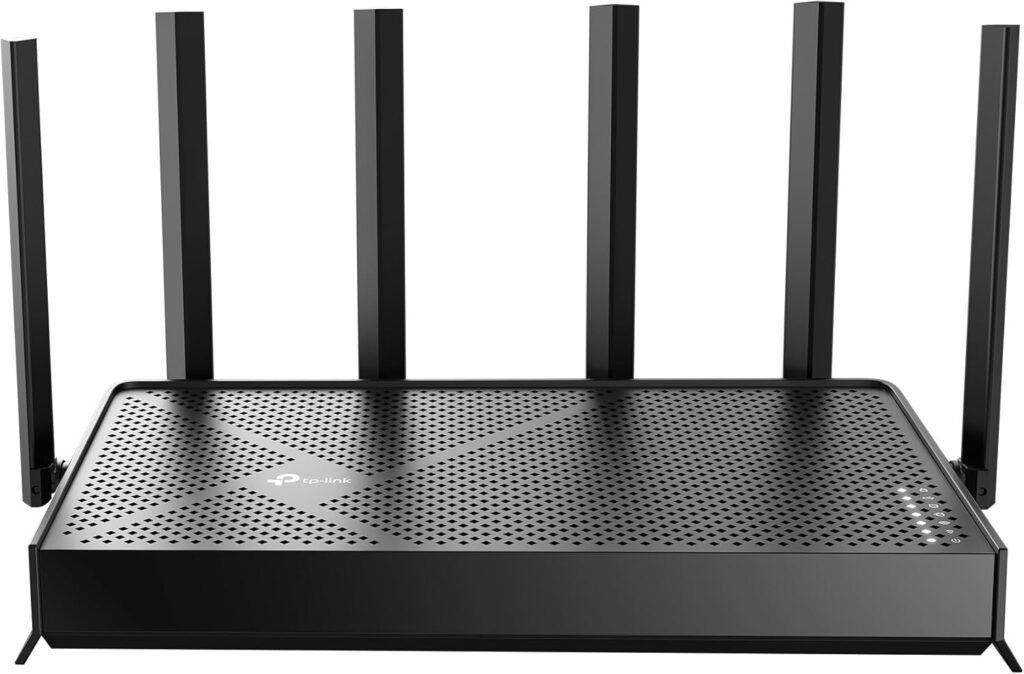
Overview: Best for Multi-Gig Internet and Longevity
If your home is prepared for the next wave of internet speeds (2 Gbps and above), or if you simply hate replacing tech every few years, the TP-Link Archer BE9700 is the most forward-looking choice on Amazon. It brings the incredible potential of Wi-Fi 7 (802.11be) into the home environment.
Wi-Fi 7 and Quad-Band Architecture
The BE9700 is a Quad-Band router, featuring the standard 2.4 GHz, the 5 GHz band, the 6 GHz band, and a second powerful 5 GHz band, which significantly reduces network interference and congestion. Its theoretical combined speed is close to 10 Gbps. More importantly, Wi-Fi 7 introduces Multi-Link Operation (MLO), which allows devices to transmit data over two different bands simultaneously, vastly increasing both speed and reliability—a game-changer for latency-sensitive applications.
10 Gigabit Connectivity for Tomorrow
Like its ASUS competitor, the BE9700 is built with physical ports that exceed today’s standards. It boasts two dedicated 10 Gbps ports—one for WAN and one for LAN. This massive capacity ensures that as ISPs push out higher speeds and local devices (like new PCs and servers) adopt 10G Ethernet, your router is already ready to handle it without breaking a sweat. It is a powerful, yet surprisingly accessible, way to secure your network’s future.
| Key Feature Summary | Why It Matters for Home Use |
| Wi-Fi 7 (BE9700) | Provides the fastest possible speed and the longest lifespan of any router on this list. |
| Dual 10 Gbps Ports | Prepared for the highest speeds offered by any residential ISP today or tomorrow. |
| MLO (Multi-Link Operation) | Dramatically increases reliability and speed for Wi-Fi 7 devices. |
| Quad-Band Design | Superior congestion management, even in dense Wi-Fi environments. |
Target User
This router is specifically for the power user with a high-speed fiber internet subscription (2 Gbps+) or the dedicated tech enthusiast who wants to be among the first to adopt Wi-Fi 7. It is an expensive but invaluable long-term investment.
Stop Waiting, Start Connecting
Your struggle with buffering, dead zones, and dropped calls ends here. The constant battle against slow internet is not a sign that you need a faster internet plan; it’s a sign that you need better networking hardware.
Choosing one of these top 5 WiFi routers on Amazon for home use is the single best decision you can make today to improve your family’s digital quality of life. Whether you prioritize premium security, extreme gaming speed, ultimate simplicity, or future-proof technology, the solution is readily available. Invest in your connection, and watch your frustrations disappear.
Ready to Upgrade?
It’s time to claim the full speed you’re paying for!
- Click through to the Amazon links for the router that best matches your home’s needs and current internet plan.
- Make the leap—a simple setup process is all that stands between you and flawless Wi-Fi coverage.
- Join the MindGearMen Community! Did this guide help you finally conquer your Wi-Fi dead zones? We want to know! Drop a comment below sharing which router you chose and how it has transformed your home network. Let’s gear up and share the success!


